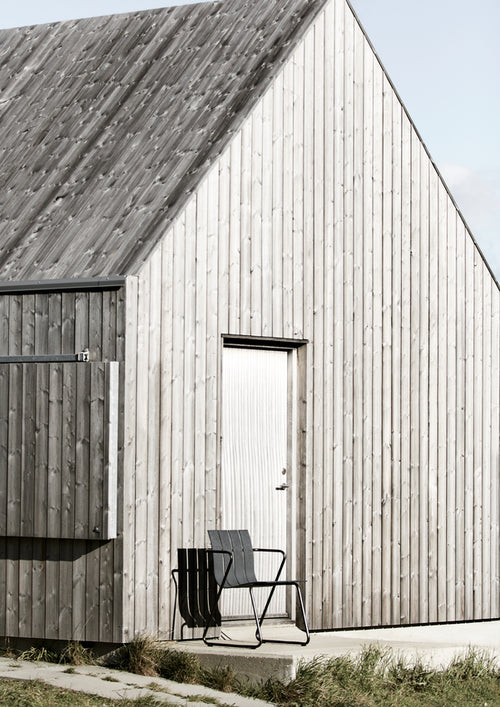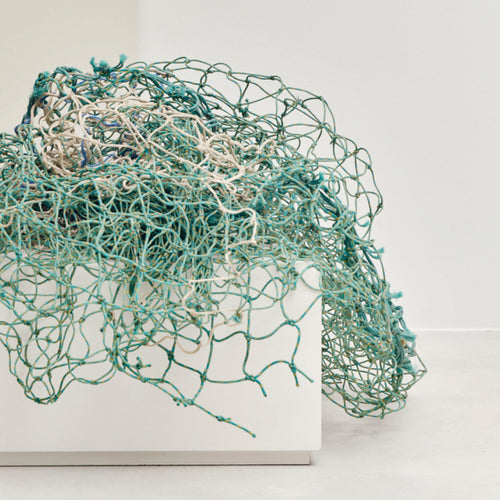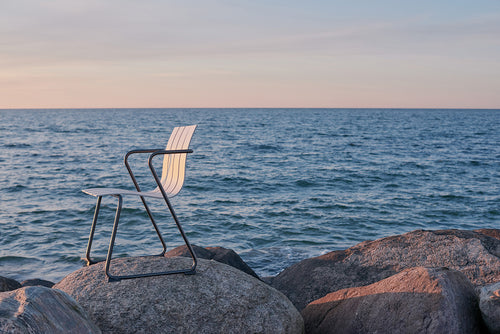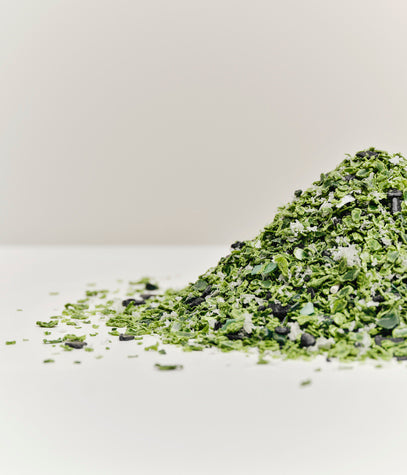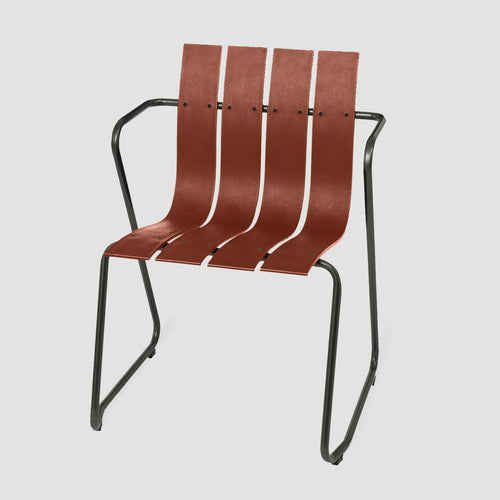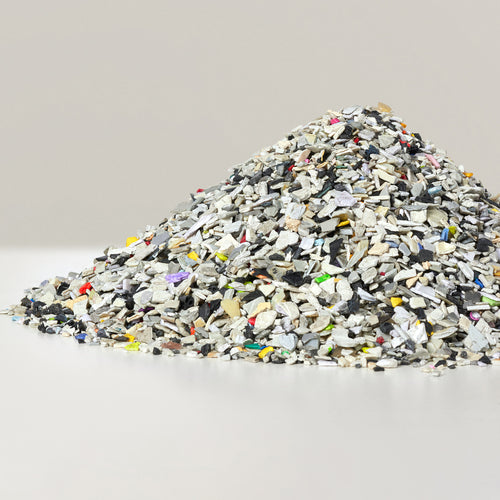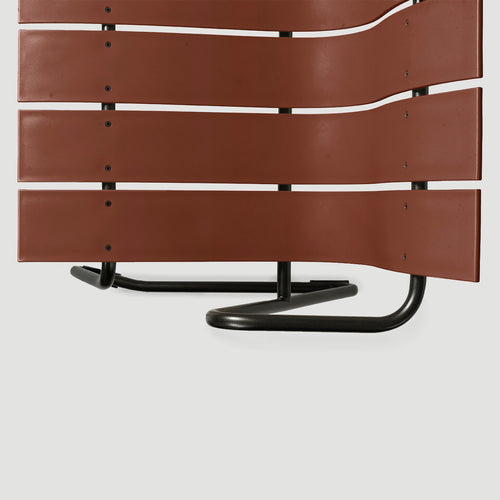Celebrating 70 years of timeless design
This spring, we proudly celebrate the 70th anniversary of the Ocean Collection, originally designed in 1955 by the renowned Danish designers Nanna and Jørgen Ditzel. As a testament to timeless design, Mater has since 2019 reimagined the collection using recycled materials, blending heritage with innovation in a vision of how today's waste streams can be transformed into beautiful and durable furniture.
To mark the 70th anniversary, a new series of campaign images highlights the timeless elegance of this fluid outdoor design. The images are uniquely shot at Nanna Ditzel's former summer house in Northern Zealand - now owned by her daughter Vita Ditzel. As a special addition, select images also capture the house's original interior, designed by Ditzel herself, including an image of the original chair from 1955 crafted with white steel tubes and wooden veneer slats.

The Ocean Collection
Originally produced in wood veneer, the outdoor furniture collection was first designed in 1955 by Jørgen and Nanna Ditzel - one of the 20th century's most renowned design duos. The chair was then named Havestol by Nanna & Jørgen Ditzel, which translates from Danish to ‘garden chair.’ The series featured a frame made of red, white or black lacquered steel tubes, paired with a laminated beech seat and a choice of ash or teak veneer. Havestol was produced by Poul Kolds Savværk in Kerteminde, on the island of Funen, Denmark, and was only in production for a short period of time.
Since 2019, Mater has been reimagining these robust designs in an effort to tackle various waste streams while simultaneously paying homage to Danish design heritage. Currently, we have four colourways – Black, Sand, Green, and Rust Red – and we operate with three different waste streams for the collection production: fishing nets, pharma plastic waste, and electronic plastic waste.
Originally produced in wood veneer, the outdoor furniture collection was first designed in 1955 by Jørgen and Nanna Ditzel - one of the 20th century's most renowned design duos.Since 2019, Mater has been reimagining these robust designs, in an effort to tackle various waste streams, whilst simultaneously paying homage to Danish design heritage.
This year we are introducing a new colourway as a supplement to the series existing black, green, and sand colour. As warm tones were known as a favourite of Nanna Ditzel, the 'Burnt Red' colourway was carefully created in celebration of Nanna and Jørgen Ditzel's legacy. In addition to this colour extension, we have also introduced a new waste stream into the collection.
The entire Ocean Collection is produced with a traditional injection moulding technique, but differing from the earlier versions, the new 'Burnt Red' iteration is made using post-consumer e-waste plastic.
It all began with discarded fishing nets
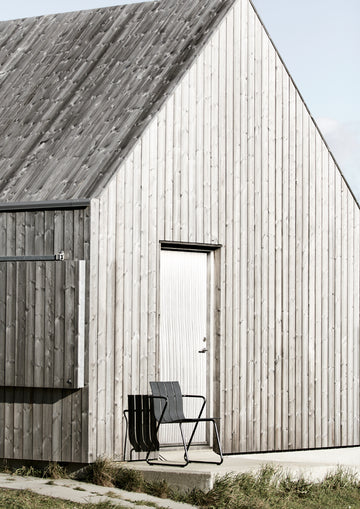
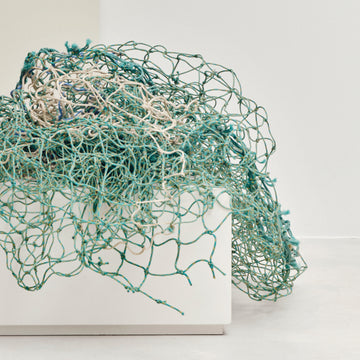
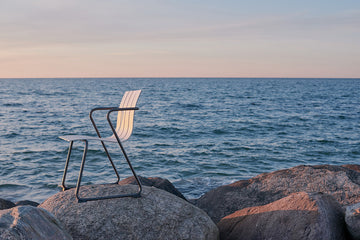
The first variants of the Ocean Collection were 'Sand' and 'Black', which are both made of recycled fishing nets and hard plastic. The vast amounts of ocean plastic waste are one of the most challenging issues facing our planet. An innovative business model motivates fishermen across the world to dispose of their discarded fishing nets at collection points instead of dumping them in the sea. Mater was the first furniture company to make furniture of recycled fishing nets since others have followed.
One Ocean Chair in Black or Sand recycles 1.62 kg of waste materials



The green version is made of pharma plastic waste (up until spring 2025, it was made of recycled Carlsberg beer kegs, but scarcity in this waste stream made us look for alternatives). Pharma plastic waste is a material made from recycled pharma plastic waste, such as discarded insulin pens. Advances in technology now enable the safe decontamination of medical plastics, allowing materials once destined for incineration to be repurposed. Pharma plastic waste is derived from the polypropylene (PP) fraction of medical waste, sourced exclusively from within Europe.
One Ocean Chair in Green recycles 2.1 kg of waste materials
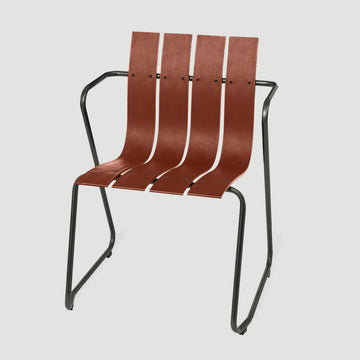
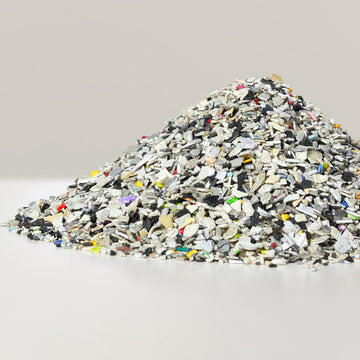
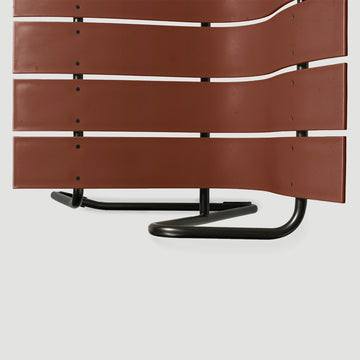
The Ocean Collection in Burnt Red is made from post-consumer e-waste.
E-waste consists of mixed plastic parts from end-of-life electronic appliances such as fridges, displays, keyboards, etc. When sorted and cleaned it can be turned into plastic pellets that can be used as a base for injection moulding. Due to the world's consumption habits e-waste is considered the fastest-growing waste stream in the world.
One Ocean Chair in Burnt Red recycles 1.84 kg of waste materials
Jørgen & Nanna Ditzel
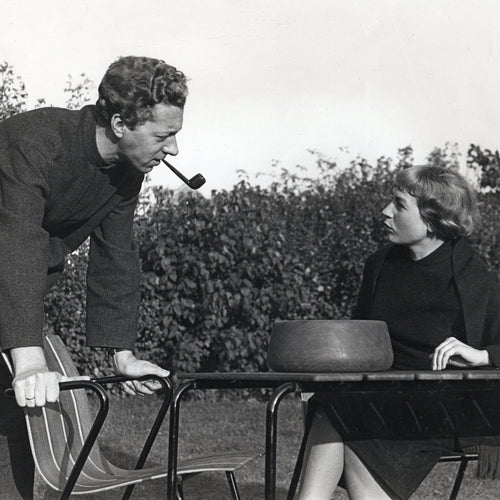
Nanna & Jørgen Ditzel were born in respectively 1923 and 1921. They met each other at the Danish School of Arts and Crafts in Copenhagen, where they both were students. In 1946, they established their design studio. The period from 1946 to 1961 was very productive for the young couple. After Jørgen’s untimely death in 1961, Nanna continued their joint project alone. She became a prominent designer in a period when the Danish design and architecture scene was dominated by men.
In her work as a designer, she tackled everything from textiles to jewelry and furniture – finding a form and direction that pointed away from the strictly modernist, functionalist dictates issued by Kaare Klint and his school. She was actively producing designs until she died in 2005 and is known for her organic form and innovative use of materials, which helped redefine Danish design aesthetics.
For international customers, please find dealers in other countries here













